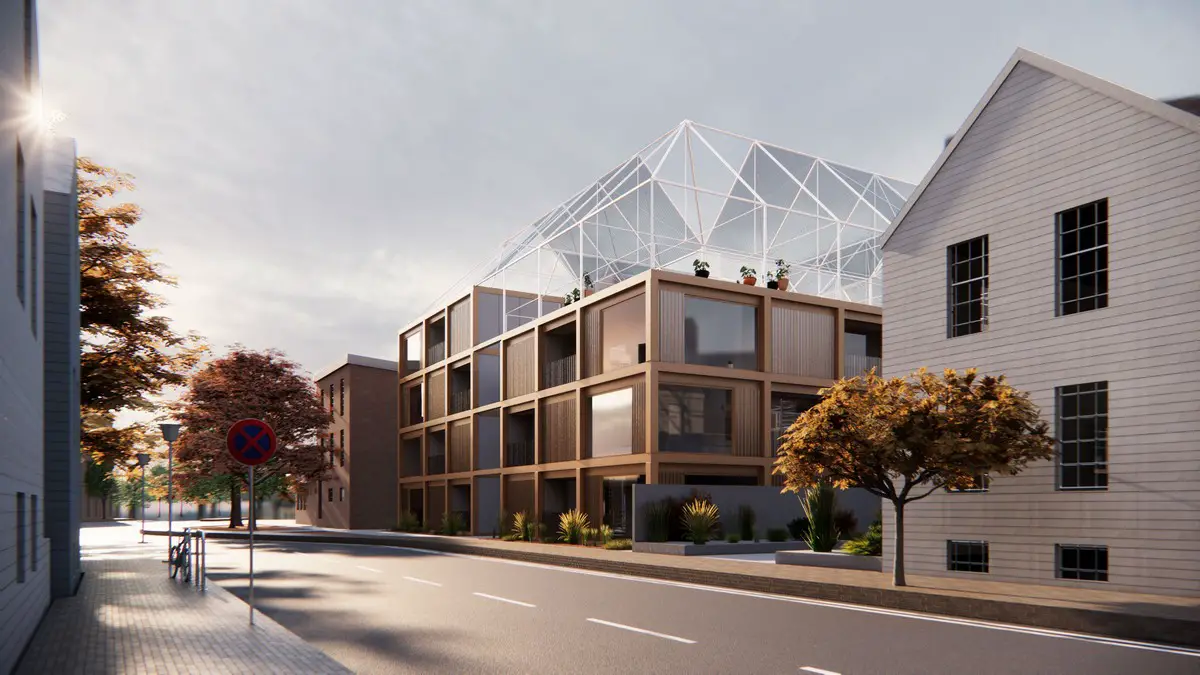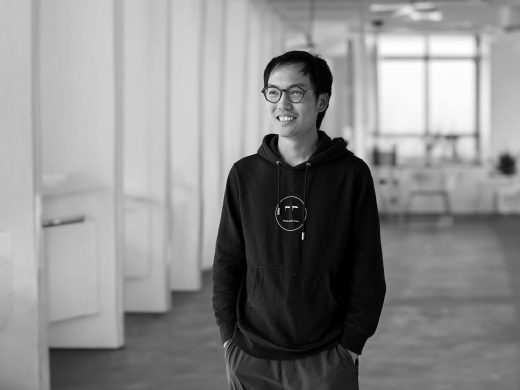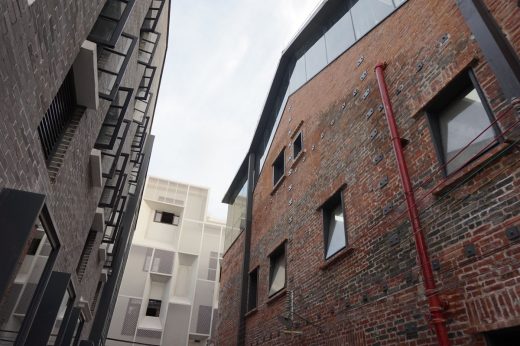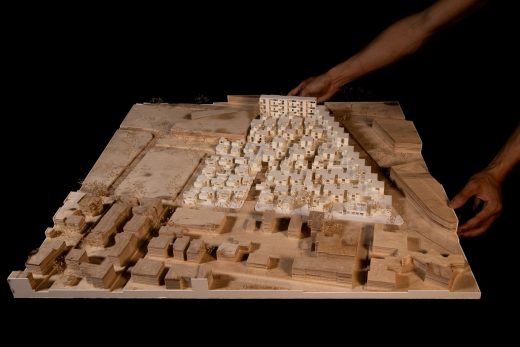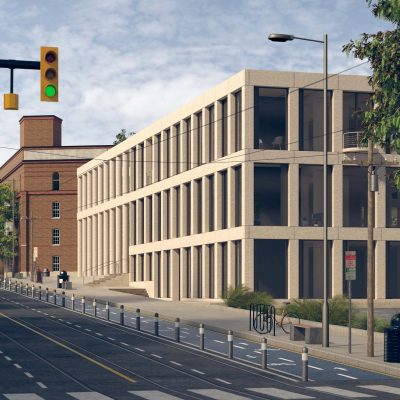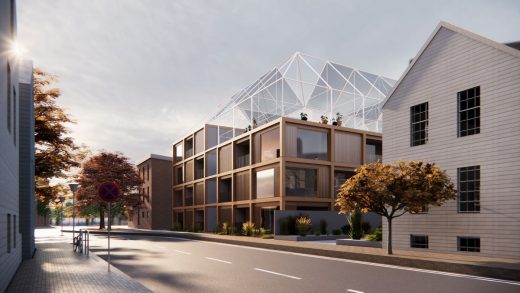Xianming Sang redefines sustainability in architecture, Chinese urban planning, China masterplan design
Evolving Spaces: How Xianming Sang Redefines Sustainability in Architecture
2 May 2024
Xianming Sang is an architect who passionately pursues the integration of sustainability into both the environmental and social fabric of his architectural designs. His philosophy is grounded in the belief that true sustainability goes beyond green building certifications and energy efficiency; it encompasses the adaptability and resilience of structures to serve generations. Sang’s aspirations center on creating buildings that are not only built to last but designed to evolve, reflecting a commitment to sustainability that transcends the typical lifecycle of modern constructions.
Core Philosophies of Xianming Sang
- Adaptability and Flexibility: Sang advocates for buildings that offer maximum flexibility in their use. His designs frequently incorporate neutral structural grids that facilitate easy reconfiguration of layouts without the need for demolition. This approach allows buildings to adapt to changing needs over decades, significantly reducing the environmental impact associated with demolition and reconstruction.
- Material Sustainability: In Sang’s vision, the fundamental structural elements of a building are constructed with high-quality, durable materials that stand the test of time. Conversely, more transient elements such as partitions and facades are designed using materials that are easier to manufacture, transport, and replace, thereby minimizing their carbon footprint.
- Passive Design Principles: Sang emphasizes the importance of passive architectural strategies to reduce a building’s energy consumption. This involves careful consideration of a building’s orientation, window sizing, and placement to optimize natural heating, cooling, and lighting, thus minimizing reliance on artificial energy sources.
- Inclusive Design Process: Believing that architecture is a democratic process, Sang promotes the involvement of community members in the design and evolution of buildings. This inclusive approach ensures that the spaces are reflective of and responsive to the needs and aspirations of those who inhabit them.
- Integration of Timelessness and Change: By juxtaposing elements of permanence with the potential for adaptation, Sang’s designs remind occupants of the evolving nature of architecture. His buildings are meant to inspire a long-term mindset among inhabitants, fostering a culture of sustainability and continuous improvement.
Illustrative Projects
These principles are vividly reflected in several of Sang’s projects, each embodying his commitment to resilient, adaptable, and sustainable architecture.
- Yongqing Fang Renovation in Guangzhou, China (2016)
During his collaboration with Atelier cnS, Sang contributed to the revitalization of the Enning Road, a historic area in the heart of Guangzhou. This project tackled the complex challenge of integrating modern urban needs with the preservation of historical architecture. The renovation focused not just on restoring the façades and structural integrity of ancient buildings but also on reinvigorating the district’s urban life. By introducing modern functionalities and flexible spaces within the existing heritage framework, the project created a lively, sustainable urban area that respected its roots while embracing contemporary urban culture. This transformative approach helped re-establish the area as a vibrant community hub, blending the old with the new in a sustainable, respectful manner. - [Im]perfect Homes (2019)
Working with Sharon Deng, Sang developed “[Im]perfect Homes,” a project that redefined the concept of residential space. This innovative design proposed a network of living units that can be endlessly reconfigured, adapting to the changing needs of its residents. The project used modular components to facilitate this flexibility, allowing for the spaces to evolve—from expanding family sizes to changing personal or professional needs. This adaptability is crucial for reducing the environmental impact typically associated with remodeling or moving to new residences, highlighting Sang’s commitment to sustainable living solutions. - A House For Almost Everything (2020)
This civic project serves as a multipurpose facility that connects community members to their cultural and historical roots while providing for their contemporary needs. Designed to serve a multitude of functions—from community gatherings and events to exhibitions and educational programs—the building features modular internal structures that can be easily reconfigured. Sang’s design ensures that the civic center remains a relevant and integral part of the community by adapting to its evolving demands, embodying his principle of architectural resilience. - The New Collective Courtyard (Thesis Project)
For his master’s thesis at Harvard GSD, Sang revisited the traditional courtyard housing model, reinterpreting it for contemporary urban settings. His project, “The New Collective Courtyard,” proposed a series of communal spaces designed to foster interaction and build community among residents. By integrating these shared spaces into the design, the project encourages sustainable urban living, providing areas for socialization, relaxation, and cultural activities within a dense urban fabric. This design not only enhances the quality of life for residents but also contributes to a greener, more socially interconnected urban environment. - Brown University: Grad Center Tower C (2023, Perkins&Will)
At Perkins&Will, Sang was instrumental in the renovation of Grad Center Tower C at Brown University, focusing on sustainable materials and energy-efficient designs. The renovation included the modernization of interior spaces to better meet the needs of graduate students while respecting the building’s historical significance. By using high-quality, durable materials and integrating energy-efficient systems, the project ensured that the building would serve future generations of students, reducing the need for future resource-intensive renovations. - Manchester Public Library (2023, Perkins&Will)
The new Manchester Public Library, conceptualized in collaboration with Perkins&Will’s New York Studio, represents a significant evolution in the role of public libraries. The project was designed not just as a library but as a central resilience hub for the community. This forward-thinking design reimagines the library as an integral, multifunctional space that significantly contributes to community resilience and sustainability. Features include spaces for community meetings, educational programs, and environmental initiatives, all designed with sustainable materials and systems. The library is intended to be a model for future community-focused buildings that prioritize environmental stewardship and social well-being.
Through these projects, Xianming Sang not only advances the field of architecture but also demonstrates how thoughtful, innovative design can profoundly impact communities, fostering sustainability, adaptability, and resilience. His work is a testament to the potential of architecture to enhance both the built environment and the lives of those it serves.
Comments for the Evolving Spaces: How Xianming Sang Redefines Sustainability in Architecture – Chinese building design page welcome: info(at)e-architect.com
Another article about Planning Chinese Cities on e-architect:
Chinese Architectural Development
Recent Chinese Building Designs
Design: Steven Holl Architects
Chengdu Building Complex
Nikken Sekkei
Bank of Chéngdu Headquarters
Linked Hybrid
Design: Steven Holl Architects
Linked Hybrid
Comments / photos for the Chinese City Planning & Architecture Masterplans – Urban Planning China – Abu Dhabi Property Development page welcome

